Animals as Leaders has had a massive impact on modern electric guitar. The 8-string instruments the band use for their mind-bending fretboard acrobatics are now commonly found in stores around the world, their use of Fractal Audio’s Axe-Fx units helped propel the company’s products to international recognition, and their heavy electronic-music influence made it okay for bands to add considerable non-guitar elements to their guitar-based live performances. For proof of the band’s influence, start an Animals as Leaders Pandora channel and listen to a steady stream of like-minded artists that would have never achieved recognition without this trio from Washington D.C. come pouring from your speakers.
Animals as Leaders had their genesis in what was supposed to be lead guitarist Tosin Abasi’s solo album. Initially the outing was intended to have more electronic-based production, but with the help of Abasi’s friend, producer, and Periphery guitarist Misha Mansoor, the album Animals as Leaders took on the heavier and more guitar-based character we know today. When it came time to put his band together, Abasi reached out to Javier Reyes, his former bandmate from the D.C. area, and the 8-string guitar-playing core of Animals as Leaders was set.
Since then the band has achieved critical and commercial success, touring the world with a wide variety of artists and releasing three more acclaimed albums, including their latest offering, The Madness of Many. Each album showcased a new side of the band and drew on the influences of outside producers and musicians, such as Mansoor and Adam "Nolly" Getgood from Periphery, drummer Navene Koperweis, and Volumes’ Diego Farias.
The Madness of Many represents a rebirth of sorts for the band. For the first time in their career, Animals as Leaders kept all performance, songwriting, and production duties in-house. What you hear on The Madness of Many is the sound of three mind-blowing artists with free rein to create the music they want.
Their newfound approach allowed Reyes and drummer Matt Garstka to interject their song ideas and compositions on an even playing field. This brought influences as diverse as Squarepusher, classical guitarist Yamandu Costa, and even Björk.
The trio also stuck to a less-is-more ethos in all aspects of this project. Pulling way back on post-editing their performances allowed Garstka to push and pull the songs’ grooves and lent a human element to the band’s super-human sound. “I think I’ve gotten out a lot of the super-aggressive technique-based lead playing on the previous releases,” says Abasi, explaining the bands’ current song-first approach.
Animals as Leaders and their new album continue to defy categorization. When they released their self-titled debut, the world was treated to an aggressive blending of genres and guitar-playing techniques that had seldom been heard before. Many rushed to call them djent. But one listen to The Madness of Many disproves that notion, and any comparisons to other genres or bands are simply due to a lack of obvious descriptions.
As a massive fan of the band, it was this journalist’s honor to get the opportunity to chat with Abasi and Reyes about the new album, their gear, and their ever-expanding playing styles and knowledge. And maybe most importantly, why they feel like the challenging, intellectual, and often mystifying sound of Animals as Leaders continues to thrive across the world.
The Madness of Many introduces a new way of working for Animals as Leaders. What was it like self-producing the album and why did you choose to go that route?
Tosin Abasi: We initially intended to just do pre-production on our own. Then the songs started to really come together in a way that, ultimately we were like, “I don’t really know what a producer would do.” And it started to dawn on us that we could release this thing as the work of just three of us.
Javier Reyes: The original idea was to work again with Misha Mansoor of Periphery. Even with the mixing, we actually sent it out to three different people. But the mixes that I had on it were closer to what we wanted. So we decided again, “Well, let’s just handle it ourselves.”
You seem to have benefitted musically from the process. Going forward, is this the way you see yourselves working?
Abasi: It’s a good question. We’re really feeling empowered by self-producing this album, so I think there’s going to be more of the same. And you’re just going to hear more exploration from us.
Are there any drawbacks to keeping everything in-house?
Abasi: Some of the drawbacks would be, depending on who you work with, you’re going to get different levels of editing, quantization, and stuff like that. We wanted as little editing or quantizing as possible, but there are some producers whose sound is reliant on replacing drums and samples and editing things to fit perfectly on the grid.
Reyes: The drums are way less edited than they were on The Joy of Motion or any of the previous albums. We just wanted to have a more organic feel. The band wants to grow in that direction.
Listening to the mix, I noticed the guitars in particular are very clear on this album. You can really hear the strings moving on the instruments. How did you achieve that?
Abasi: By using as little gain as possible. And by choosing [Axe-Fx modeled] amps that are mid-forward and articulate. The cool thing about extended-range guitars is that the lower the pitch, the more amplitude the actual string seems to have. It’s almost like driving the preamp harder just because the string is that much thicker. We really like the sound of the lower strings, so we go for as little gain as possible.
Reyes: Also by referencing a lot of recordings that I felt were really good. And listening to Matt and Tosin’s feedback. It was a matter of a lot of negotiating with each other and a lot of referencing other really good material.
You guys are well known for using Fractal Audio Axe-Fx guitar processors and playing 8-string guitars. Is that what you used for this album?
Abasi: It’s funny you say that, because for the album, yes. But right now I’m running a completely analog rig. No Axe-Fx. I just fell back in love with the immediacy of that response. I’m using a Morgan SW50R. It’s a single-channel, handwired tube head. It’s just very basic. Pure, clean, lots of headroom, and nothing fancy. I use it as a pedal platform. I actually realized rehearsing The Madness of Many songs that I didn’t need a bunch of different amp models and a bunch of different effects. I’m actually using the equivalent of a 3-channel head and some core effects.
Reyes: I’m still running the Axe-Fx. I like the simplicity of it. And with travel, I don’t want to have to remake tones wherever I go. It sounds great, I know it, and it’s extremely economical. I love my Axe-Fx. If I could sleep in bed with it, I would! [Laughs.] I’m using the XL+ right now. I’m also using a Sub Machine fuzz octaver pedal from MXR on “The Brain Dance.” That’s the only third-party pedal I’m using outside of my Axe-Fx.
Besides his signature electric 8-string model and its accomplices, the rest of Javier Reyes tonal recipe lies in his blend of Fractal Audio’s Axe-Fx and Port City’s Pearl head and cabinets with Celestion speakers. Photo by Joe Russo
Is the band still using Port City cabinets?
Abasi: Javier is. But I’m using Morgan and a 4x12 that Paul Reed Smith gave me. It has alnico 65-watt speakers in it. I mike up my Morgan 2x12. It’s got Celestion G12H speakers.
Reyes: The Port City cabs are great. They haven’t done me wrong. I’m actually sending two signals out of the Axe-Fx. One has a cab sim that goes to front of house and my in-ear monitors. The other doesn’t have a cab sim, and it goes into the front of the [Port City] Pearl, which is a very clean single-channel amp with a non-colored tone. I have two 2x12 Port City cabs. One of them has Celestion Creambacks and the other one has G12s. I use that for my stage sound.
Tosin Abasi's Gear
Guitars
• Ibanez Tosin Abasi prototype signature 8-string
• Ibanez TAM100 signature model 8-string
• Ibanez RG90 Prestige 9-string
• Strandberg custom 8-string
• Rick Toone Blur 8-string Extended Range Guitar
Amps
• Morgan SW50R 50-watt head
• Morgan 2x12 cabinet with Celestion G12H speakers
• Paul Reed Smith 4x12 cabinet with Celestion G12M-65 Creamback speakers
Effects
• Pro Tone Tosin Abasi Signature Overdrive
• two Friedman BE-OD Overdrives
• Leqtique overdrive
• Empress ParaEQ
• Strymon BigSky Reverb
• MXR Carbon Copy Delay
• TC Electronic Ditto X4 Looper
• Wampler Ego Compressor
• ISP Decimator noise gate
• Carl Martin Octa-Switch
Strings and Picks
• D’Addario NYXL custom 8-string sets (.0095-.074)
• Dunlop .73 mm signature (similar to a Jazz III, but slightly larger)
What guitars did you play on the album?
Abasi: For about 90 percent of the album, minus the acoustic songs, I played my signature prototype Ibanez—though “Private Visions of the World” is on a 9-string.
Reyes: I think I used an 8-string PRS on a couple of songs. We used an Aristides guitar with Bare Knuckle pickups in it. And on “Private Visions of the World,” I used a Vintage Plus from ESP. I love that guitar. We used my signature Ortega 8-string classical on “The Brain Dance,” as well.
Tosin, your prototype guitar has been seen all over the web and on tour. I’m assuming it is something that will be coming out soon?
Abasi: Yeah, we’re just trying to nail the design, but I’ve been playing it for over a year. And, I should add, I’m using Fishman Fluence pickups now.
Why the change from your signature set?
Abasi: It was kind of an accident. I A/B’d them against my Duncan prototypes and they smoked my Duncans. I just couldn’t believe it. So in that moment I literally couldn’t move forward with what I was playing. Those A/B comparisons are definitely the best way to really expose differences between pieces of gear.
You’ve also been famously seen with Rick Toone and Strandberg guitars. Did those guitars make it to the album?
Abasi: Yes. The Rick Toone is on “Backpfeifengesicht.” Those instruments have a unique sound. And they both have extended fretboards beyond the nut, on the seventh and eighth strings. So there are certain songs, like “Physical Education,” that were written specifically on the Rick Toone or the Strandberg.
Javier, are you still playing your signature ESP 8-strings on tour?
Reyes: Yeah, I have two of them out right now. In Europe I even took my lower-tier model. It’s a really great guitar. For the price, it’s one of the better 8-string guitars. I use my signature Eclipse 8 DiMarzio pickups. I voiced them to have a single-coil sound but still have that humbucker thing to them. I love them. They’re very clear.
Animals as Leaders is known for incorporating Latin influences and electronic elements, and using such guitar techniques as slapping and heavy low-tuned riffing. Are those trademarks something you’re conscious about keeping in your sound?
Abasi: Animals as Leaders is a space to bring all that together without many rules, and so you hear it all come out.
Reyes: The technical stuff comes pretty naturally. But I always want to come up with something that’s listenable and isn’t complicated for the sake of being complicated. But I think we’re aware that the “thumping” is definitely a unique quality that the band has. For the time being, it’s definitely our signature sound.
Tosin, in the last interview you did with Premier Guitar for The Joy of Motion, you mentioned wanting to increase the lyrical qualities of your playing. Do you think you achieved that on this album?
Abasi: Yeah,I think so. This album is the least shreddy, as far as my lead work is concerned, and I feel like it’s a result of a few things. One is not trying to express the same things repeatedly. And my taste in guitar music has really evolved a bit. I’m really responsive to vocal-centered minds, like Derek Trucks. And by doing the Generation Axe tour and being around guys like Zakk Wylde, Nuno Bettencourt, Yngwie, and Vai—all quintessential electric guitar players—it starts to really sink into my playing.
Javier, how has your playing expanded on the new album, and who has influenced you?
Reyes: I’m thumping a lot more. A lot of these songs I can get through without using a pick. The line between guitar and bass technique is getting more blurred. Sometimes I look down and think, “I’m literally playing what looks like bass stuff.” But it’s still guitar. I like that it’s a totally unique style.
There’s a Brazilian classical player named Yamandu Costa who is just phenomenal. He has an album with a Brazilian mandolin player named Hamilton de Holanda that will blow away any guitar player with an appreciation for beautiful music.
Drummer Matt Garstka and guitarists Tobin Abasi and Javier Reyes, from left to right, summed all their diverse influences for The Madness of Many, crafting a sound that extends from classical music to Björk.
Are there moments on the album that display each of your styles and influences?
Abasi: I think all of Javier’s parts on “The Brain Dance” and “Apeirophobia.” And even “Private Visions of the World” … he’s doing the lead line there based on my chord melody. I think you can really hear him offer a wider range of expression than just rhythm, like on the first album.
Reyes: On “Private Visions of the World,” Tosin has really dense chord melodies happening. So I wanted to write something that was very complementary, but still very melodic. Sometimes it’s hard because we’ve been playing together a long time. We definitely go back and forth with influencing each other.
Javier Reyes’ Gear
Guitars
• ESP LTD Javier Reyes Signature JR-608 8-string
• Ortega Guitars Javier Reyes Signature JRSM-RWC 8-string classical
• ESP Vintage Plus 6-string
• Paul Reed Smith 8-string
• Aristides 080
Amps
• Fractal Audio Axe-Fx II XL+
• Port City Pearl Head
• Port City 2x12 Wave cabinet with Celestion G12H speakers
• Port City 2x12 Wave cabinet with Celestion G12M-65 Creamback speakers
Effects
• Fractal Audio MFC-101 Foot Controller
• Fractal Audio EV-1 Expression Volume Pedal
• MXR Custom Shop Sub Machine Octave Fuzz
Strings and Picks
• D’Addario NYXL custom 8-string sets (.009-.074)
• Dunlop .73 mm signature (similar to a Jazz III, but slightly larger)
You have electronic elements and harmony guitar lines running throughout your albums. How do you pull those off live?
Abasi: If it’s not something Javier and I can play, then it has to be a layer, the same way the synth stuff is on the background track.
So you have to be right on your click track! That’s impressive. You have to be tighter than humans, basically.
Abasi: We are just really tight humans. [Laughs.] We play to a click for everything, so we know that if we get off, it’s a potential disaster. There’s no margin for error.
How would you describe the evolution of Animals as Leaders from the self-titled debut to where you are now?
Abasi: With the self-titled, it was not really a band. It was a bunch of guitar ideas I had and some demos I made. Basically the self-titled was the end result of my collaboration with Misha Mansoor.
And then with Weightless, we worked with Navene Koperweis, who was our drummer at the time. And that kind of led things in a slightly different creative direction.
On The Joy of Motion, we went back to Misha, as well as working with Diego Farias of Volumes. And the focus was on making tracks that were shorter, a bit more focused, and song oriented.
Then with The Madness of Many, we just wanted to reference everything we had done previously. But we also worked where we didn’t have outside influence at all. I think The Madness of Many is the album we all wanted to make collectively. So the biggest difference in the process is that it was purely an internal collaboration.
Reyes: It has definitely been an evolution, as far as third-party contributors and ourselves. We always try to write as who we are in that current time, using the influences we have at the time. But this time we really wrote everything together. It was way more collaborative within the band than it ever has been.
What do you think it is about your sound that makes it so accessible worldwide?
Reyes: I think we were at that cusp of the internet that allowed us to blow up, as well as timing it with Misha. We were super-impressed with what he was doing. I remember hearing demos of Animals as Leaders before Misha, and they do not sound like anything from the first album. I don’t know if the band would have had the same amount of success without him. And we’re lucky that there are bands today that are making it a scene for us now.
Abasi: I think it’s because the sound is of musical value at the end of the day. We’re concerned with compelling rhythm, melody, and harmony, and I think that is what people are responsive to. We are trying to bring metal, progressive metal, electronic music, jazz, and classical all into one space. So I guess we’re merging the things we love. And by doing that, providing music for people who love the same things.
Today such artists as Intervals, Plini, Sarah Longfield, and Chimp Spanner are doing their own take on a similar sound. But it was Animals as Leaders that helped bring that sound to prominence. How do you feel about so many players now chasing the Animals as Leaders sound?
Reyes: It’s a dream come true. To get to the point where you’ve seen a piano, flute, sitar, or harp cover of your songs, or people writing to tell you they’re using your song for their Berklee [College of Music] audition ... I don’t know if there’s really words that can describe it.
Abasi: I think it’s awesome—the word “renaissance” comes to mind. There’s an elevation of artistry on the instrument and an attraction to learning about harmony and technique. It’s inspiring to see someone do something on this level, and I think these young players have their eyes on a very awesome prize. We’re in store for a lot of great guitar playing.
YouTube It
This live version of The Madness of Many’s opening track is a stellar example of how the band uses a wide array of guitar techniques. Check out the atmospheric breakdown at 1:10.




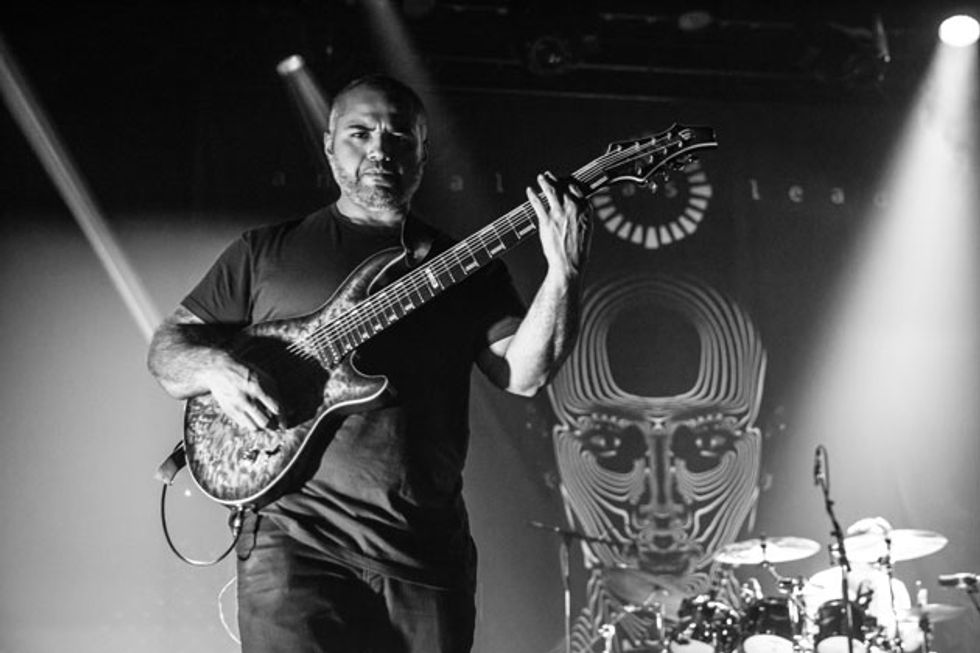
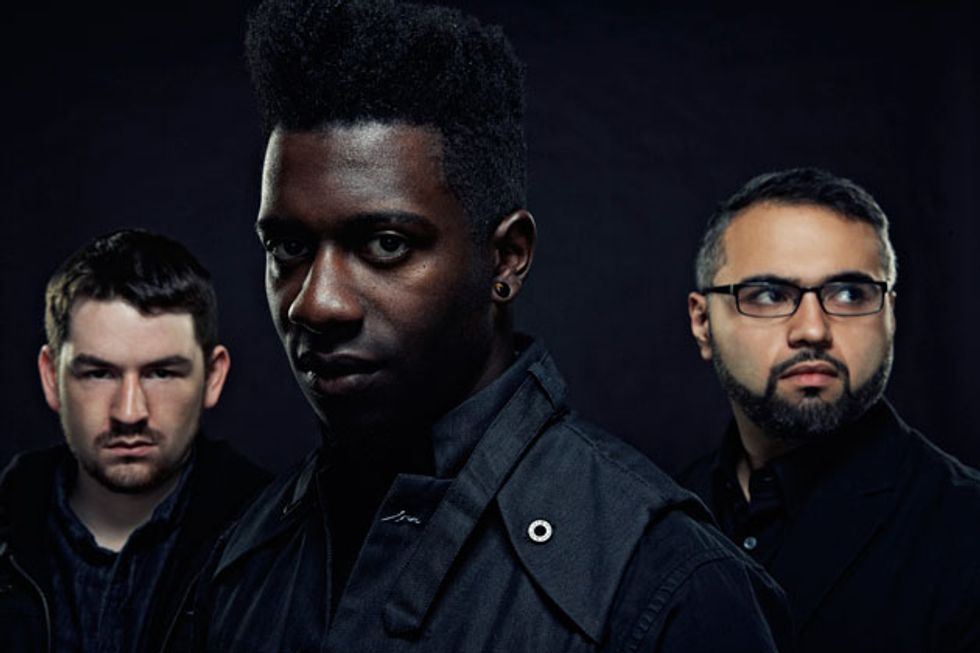
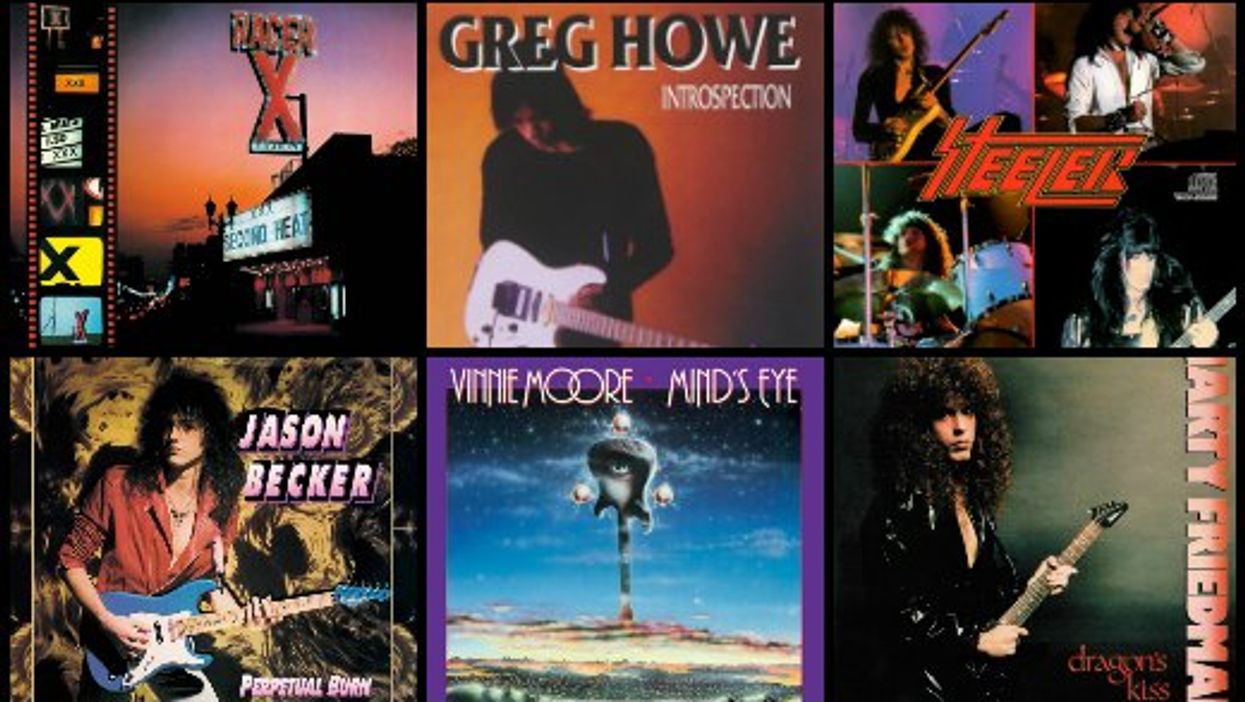
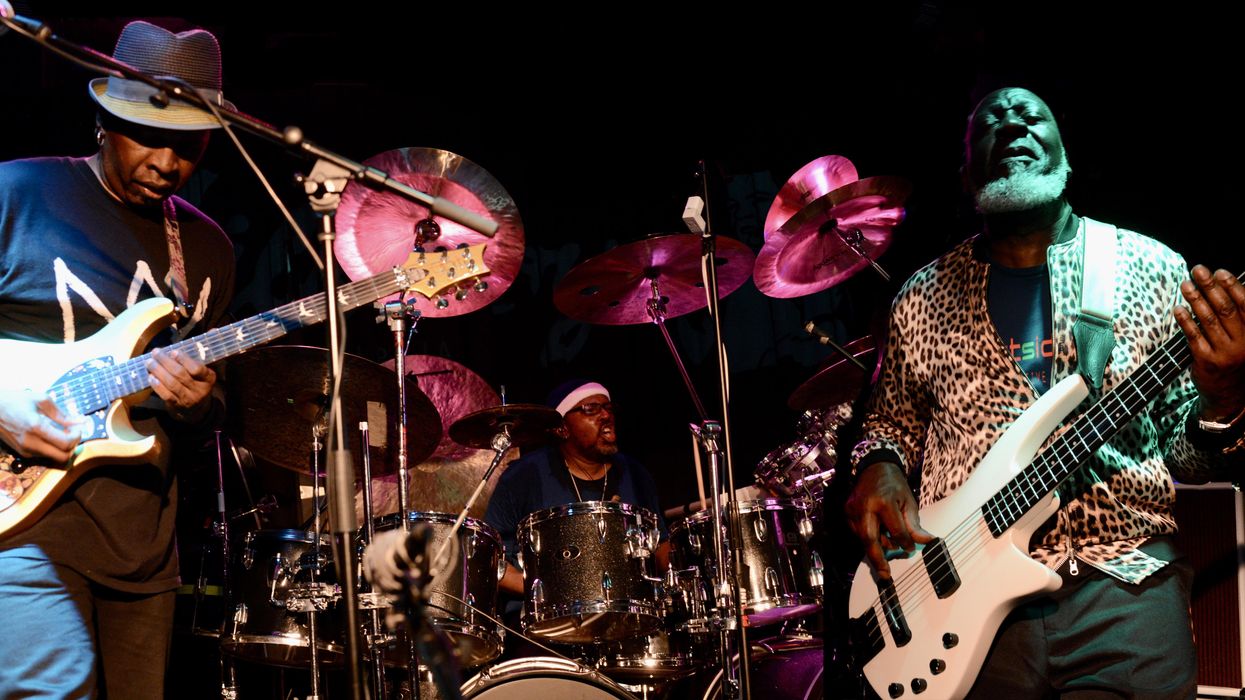
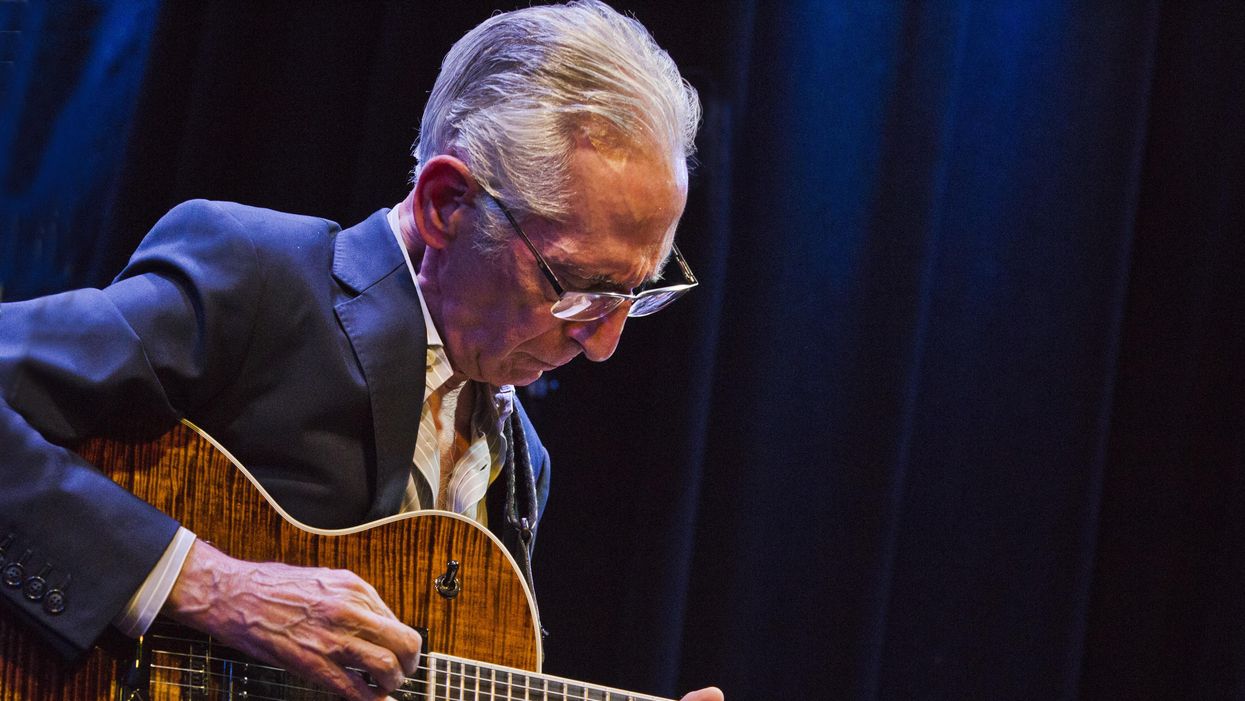

![Rig Rundown: Russian Circles’ Mike Sullivan [2025]](https://www.premierguitar.com/media-library/youtube.jpg?id=62303631&width=1245&height=700&quality=70&coordinates=0%2C0%2C0%2C0)






















![Rig Rundown: AFI [2025]](https://www.premierguitar.com/media-library/youtube.jpg?id=62064741&width=1245&height=700&quality=70&coordinates=0%2C0%2C0%2C0)




















 Zach loves his Sovtek Mig 60 head, which he plays through a cab he built himself at a pipe-organ shop in Denver. Every glue joint is lined with thin leather for maximum air tightness, and it’s stocked with Celestion G12M Greenback speakers.
Zach loves his Sovtek Mig 60 head, which he plays through a cab he built himself at a pipe-organ shop in Denver. Every glue joint is lined with thin leather for maximum air tightness, and it’s stocked with Celestion G12M Greenback speakers.











